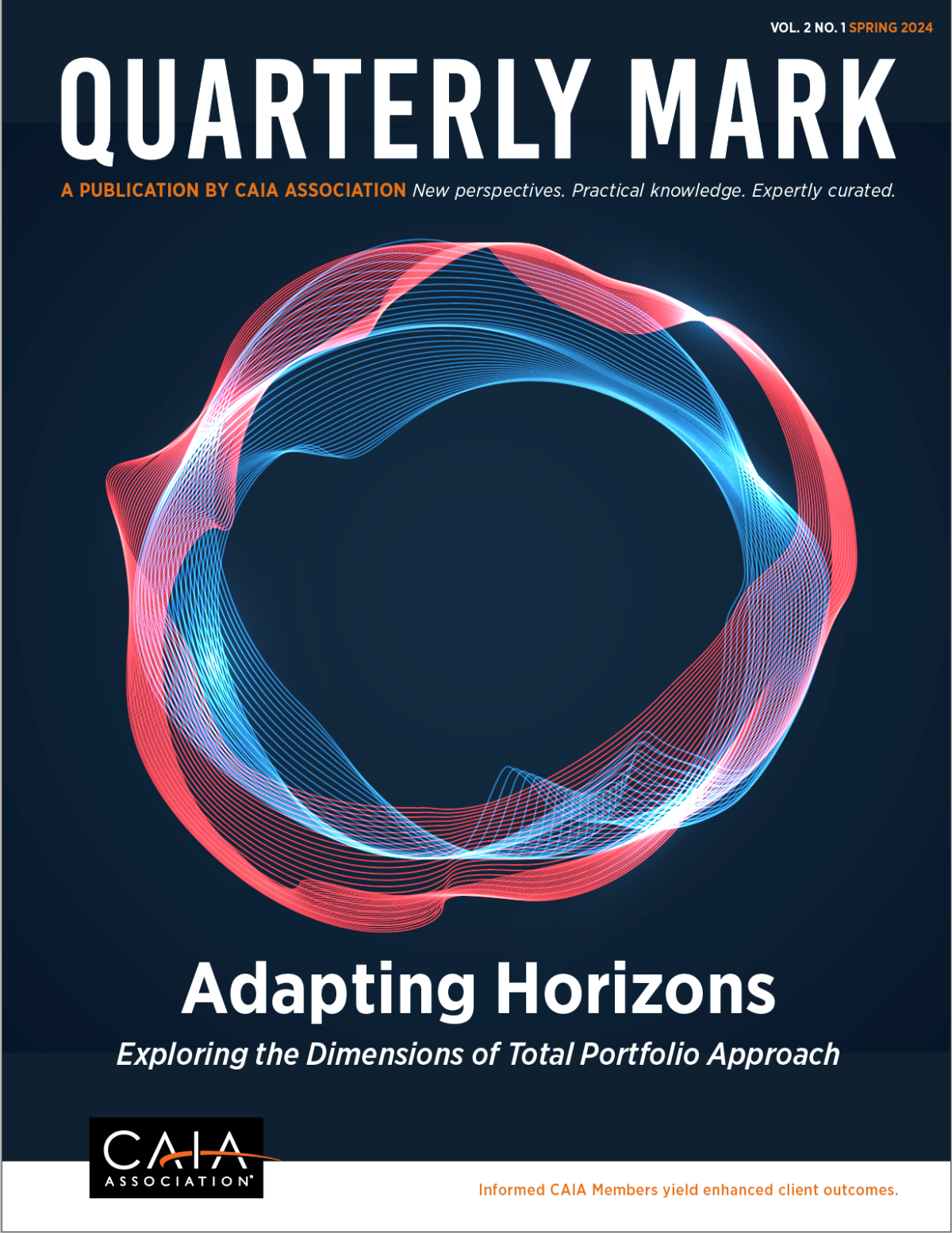By John L. Bowman, CFA, President of the CAIA Association.
Since the arrival of Modern Portfolio Theory (MPT) in the early 1950s by the legendary Harry Markowitz, we have been sturdily anchored to this philosophy when constructing portfolios. MPT’s most tangible heir, Strategic Asset Allocation (SAA), and all its apparatus—mean-variance optimization, efficient frontier, benchmarking, not to mention our organizational charts, compensation structures, academic course work, and performance reporting—have perpetuated this worldview.
In recent years, however, an enterprising handful of large institutional investors have begun challenging the common wisdom of an SAA approach given some of its now known inherent weaknesses. These include a tendency to breed silo behavior, unhealthy competition for resources and attention, unrecognized duplication or disjointed risk exposure across the portfolio, and difficulty in managing the capital pool holistically around a view of the future.
In parallel with the innovation happening at large allocators over the last decade, the academy has begun dropping breadcrumbs assessing alternative approaches to aligning the investment process more acutely with total portfolio return.
In the most recent issue of Quarterly Mark, we’ve curated articles that explore four of the most common elements debated to be contributing to this next epoch of portfolio construction we call Total Portfolio Approach (TPA).
In his 2011 classic, the legendary founder of Greenwich Associates and long-time Yale Investment Office chair, Charlie Ellis, outlines the recipe for healthy governance. As a prerequisite for delivering sustainable investment outcomes, great governance must embody clear separation of duties with the staff, effective fiduciary risk management, and a long-termism that both empowers and disciplines the investment team.
Factor exposures have historically been used for ex-post portfolio attribution or at best, attempting to identify asset class specific exposures. Ang, Greenberg, and Babu’s seminal paper in 2016, however, symbolized a growing interest in harnessing a factor lens to construct portfolios ex ante. This revolutionary role reversal put asset class taxonomy on trial and aims to assemble a total portfolio that more precisely represents the managers’ macroeconomic investment thesis.
Perhaps the most foundational and unique identity of TPA is an egalitarian competition for capital. Each marginal allocation of capital must compete with all other options rather than just within its asset class silo, according to TPA. Using gold as an example, Vliet and Lohre emphasize the importance of more objective questioning and comparison of conventional portfolio benefits of each strategy or manager when weighed against the rest of the investable universe.
Mark Wills’ piece on culture underscores the organizational oxygen necessary to re-orient the team’s thinking around a total portfolio mindset. He emphasizes the structural advantage of a long-term horizon, breaking down walls by fostering multi-asset class expertise and shifting emphasis towards broad idea generation, rather than filling buckets with managers.
We are confident this is a timely and informative issue that will greatly benefit the reader and serve as an accelerant to the larger profession. Access to the Spring 2024 issue of Quarterly Mark is available to CAIA Members here.
About the Author:

John serves as President for the CAIA Association, overseeing the industry leading CAIA Charter, thought leadership and content development, operations, and CAIA's Asia Pacific strategy. John has devoted over 25 years to the asset management industry to recover the narrative of the value that the investment profession bring to society. He is a staunch public advocate for market integrity, long-termism, investor outcomes, diversity, human dignity and educational standards, as necessary ingredients to building a sustainable and healthy profession. John previously served as Managing Director for the Americas for CFA Institute, a region comprised of 40+ countries from Canada, the U.S., Central America, South America and the Caribbean. Bowman joined CFA Institute in 2004 after holding several industry positions. He served as a portfolio manager at Mellon Growth Advisors (MGA), where he was responsible for portfolio construction and stock selection for the MGA International Growth and MGA Global Growth strategies. Bowman also served as a portfolio manager for the International Growth Opportunities Strategy at State Street Global Advisors (SSgA) in its Global Fundamental Strategies Group. John is a prolific writer and commentator, frequently appearing in industry and business publications such as the Wall Street Journal, The New York Times, Pension and Investments, Financial Advisor, The Independent, Wealthmanagement.com and CNBC. Bowman earned a BS in Business Administration from Mary Washington College and is a CFA charterholder.




